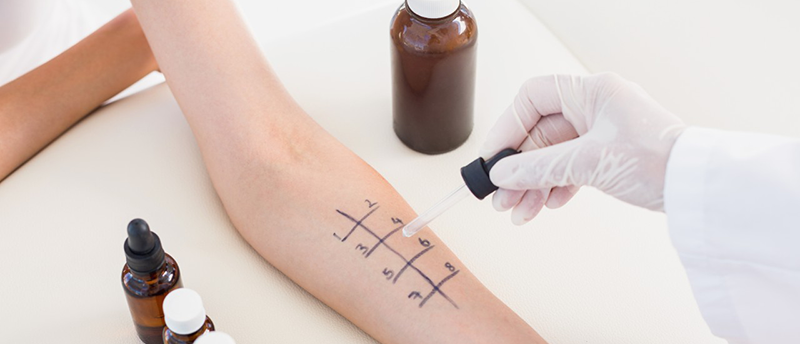How to Treat Allergies with Immunotherapy

While it may take a year, you can reduce reliance on allergy medicines. Here's how to treat allergies with immunotherapy (allergy shots).
When pollen makes your nose clog up and your eyes itch, popping an over-the-counter antihistamine or decongestant can bring relief — temporarily. Within 24 hours, your allergy symptoms will be back in full force to hound you again. For a more permanent solution to sniffles, sneezes, and runny eyes, your allergist might recommend immunotherapy. Also known as allergy shots, immunotherapy wards off symptoms long-term by priming your immune system against your allergy trigger.
How does immunotherapy work?
Spring and fall allergy symptoms start when your immune system overreacts to substances like ragweed or grass, triggering the release of chemicals that make your nose and eyes run. Immunotherapy exposes your immune system to gradually increasing amounts of the allergen, getting it used to the substance so it eventually stops misfiring.
Immunotherapy comes in two forms: Allergy shots, called subcutaneous immunotherapy (SCIT), and liquid or pills you take by mouth, called sublingual immunotherapy (SLIT).
Allergy shots (SCIT)
Most people get allergy shots in two phases. During the build-up phase, you’ll see your allergist for injections once or twice a week for three to six months. The amount of allergen in the shots will increase until you reach the effective dose that stops your body from reacting. Then, you’ll go into the maintenance phase, getting shots every two to four weeks.
Mindful of the fact that most people don’t have time to see an allergist week after week, today doctors are putting their patients on an accelerated dosing schedule that helps them reach maintenance phase much faster. With rush immunotherapy, you get several shots two to three days in a row. Cluster immunotherapy gives you two to four injections, 30 minutes apart, one day a week for three weeks. “Research shows accelerated schedules are safe and effective options, and they appeal to patients who do not want to commit to weekly allergy shots for five or six months,” said allergist Richard Weber, MD.
Sublingual immunotherapy (SLIT)
Sublingual immunotherapy (SLIT) is a liquid or pill that dissolves under your tongue. SLIT is as effective as shots, but without the needle stick. The other advantage is convenience. You have to see your doctor only for the first dose, which you get about four to six weeks before allergy season starts. After that, you can take the pill or liquid yourself.
“Not only is it effective, but it is safer and more convenient than the older allergy injection type of allergy treatment,” said Dana Wallace, MD, an allergist and past president of the American College of Allergy, Asthma and Immunology (ACAAI). SLIT is available for ragweed and several types of grass allergies.
Who should consider immunotherapy?
Immunotherapy is for people who don’t want to constantly take allergy medicines, or whose medicines aren’t helping their symptoms. It’s not an easy fix, though. You may need years of doctor’s visits to subdue your symptoms for good.
What are the side effects?
Most people who get side effects from immunotherapy have minor issues, like redness or swelling at the injection site. Sometimes the therapy can temporarily worsen symptoms like congestion and sneezing. In rare cases, people can have a severe reaction called anaphylaxis, with symptoms such as swelling in the throat or a tight chest. Your doctor should ask you to stay in the office for 30 minutes after you get immunotherapy to make sure you don’t react to it.
How long does it take to see results?
You may not start seeing relief for a year, and it’s common to stay on maintenance therapy for three to five years. After that, some people can stop taking immunotherapy without relapsing, while others will need to continue. Ask your doctor what kind of results you might expect based on your symptoms and the type of allergy you have.
Updated:
March 30, 2020
Reviewed By:
Janet O’Dell, RN